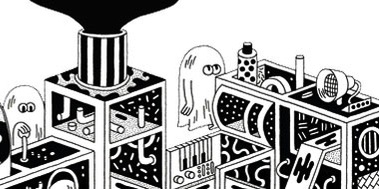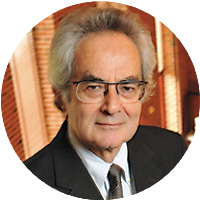RANDOM FACTOIDS /2: Turdnagels, Ghosts and Autism - Paris 2014

![]()
-Ariane Mak
Here’s a (way too) small selection of some interesting or funny things which were said during the Paris conference, during presentations or in their margins.
Ghostwriters in the machine
David Hering explored motifs of possession and the “narrating ghost” from The Broom of the System to Oblivion. He showed that these leitmotivs were associated with a concern over the authenticity of the speaking voice and anxieties of influence, symbolised by possession and counter-possession.
The theme of “ownership” is central to The Broom of the System and becomes a leitmotiv of ontological anxiety in “Westward the Course of Empire Takes its Way” [GWCH]. And while Infinite Jest is the novel where the motif first appears in earnest with Jim’s wraith, an initial draft of the text also included the first occurrence of the author’s metapresence. Indeed, in the conversationalist scene, which was among the first written by Wallace, “Hal” was initially named “David”. “The Soul is Not A Smithy” [Oblivion: Stories] then presented a “dramatizing of linguistic possession” before multiple sites of possession appeared in “Good Old Neon” [Oblivion: Stories] (which weaves motifs of ghost, ghostwriter and metapresence).
David Hering’s analysis of The Pale King was particularly stimulating. His study of the archives at the Harry Ransom Center revealed the importance of the phantom motif in the initial narrative structure for The Pale King. He examined one of the first versions of the novel demonstrating that it was to be narrated by a ghost. In this initial draft, IRS agent Shane Drinion is also a porn actor nicknamed “Sir John Feelgood” whose face is systematically digitally replaced by that of any viewer. David Hering suggested that this draft might have become “Good Old Neon” [Oblivion: Stories] and showed that at one point the novel was supposed to be narrated by both a ghost and a ghostwriter, “before these elements evolved into the more familiar metafictional structure that is present in the published text.”
What is a Turdnagel?
Listening to Lee Konstantinou’s paper we discovered (at last!) what a Turdnagel was and, more importantly, why this was actually a key question.
“Turdnagel” was the name of one of Wallace’s dogs, one of his email handles too.
But, above all, we know “turdnagels” as a special class of IRS employees in The Pale King. They basically extract and put data in computer systems and, as Lee Konstantinou stressed, are known for being very tight-knit and exclusives:
“I had come to a paragraph in the book [How to make people like you: An Instant Recipe for Career Success] that explicitly recommended loud laughter at someone in a group’s joke as being more or less an automatic way to signal or invite inclusion in that group […]. The turdnagels, though, never turned their heads or even acknowledged my laughter, which was definitely loud enough to be audible even against the background noise.” The Pale King.
Where does the term come from? Lee Konstantinou traced the first occurrence to Don DeLillo who uses it in Players as an obscure piece of slang.
But drawing on The Pale King notebooks at the Harry Ransom Center, Lee’s presentation showed that Wallace actually connected the expression with American philosopher Thomas Nagel.
His work is concerned with “the human capacity to view the world in a detached way, and argues that analytic philosophy has become too prone to objectification”. In his famous 1974 essay “What is it like to be a bat?” Nagel examines “the subjective character of experience”. To put it very simply, we can’t really imagine “what it is like to be a bat” because we are rooted in our own perspective and our own perception.

Thomas Nagel
The presentation showed that Nagel’s philosophical work resonated deeply with some of the central themes in the “John Feelgood drafts” of The Pale King mentioned earlier: abstracting yourself from your own desire, the irreducibility of subjectivity, the risk of solipsism and transformation of person into persona. What is a turdnagel then? What we become when we ignore subjectivity and are in perpetual war with our ghost.
By tracing Nagel’s influence on DFW's work, the presentation challenged the paradigm according to which Wallace’s interest in philosophy had mostly been an early preoccupation, dating from the time he was an undergraduate at Amherst College, and progressively superseded by his commitment to humanistic concerns. Lee Konstantinou demonstrated that DFW was still vigorously engaging with philosophy when he wrote The Pale King, although maybe in a subtler way than in The Broom of the System (which, according to Wallace himself, wore its philosophical references on its sleeve).
Autism and Posthuman Empathy
Ralph Clare picked up on the numerous Wallacian characters who could be situated at one point or another on the autism spectrum.
The autistic Lunt of “Little Expressionless Animals” [also GWCH], the seemingly cold doctor Kate Gompert meets in Infinite Jest and Mario come to mind.
Some characters point specifically towards Asperger syndrome: J.O.I.; Hal and his ability to consume tons of data, even if it is DMZ-induced [But is it? - Nick}; Sylvanshine, the “fact psychic” who can’t control the flow of data that surges onto his mind. [And one might add Avril Incandenza as obsessive behaviours have long been considered traits of autism.]

Even Wallace himself seems to have displayed some traits of Asperger syndrome. He apparently joked about it, saying that he was “semi-autistic”.
Ralph Clare connected this with Wallace’s posthuman paradigm which he defined in these terms: “Paul Giles has argued that David Foster Wallace is a “sentimental posthumanist” whose work admits to the fact that media, technology, and global networks have irreversibly fractured and complicated one-time notions of human identity, while nonetheless still exploring human affectivity, emotion, and longing as they persist within such techno-environments.”
These characters’ relation to data as well as their difficulties with human connection address the posthuman paradigm. But some of The Pale King characters seem to point towards a novel conception of the posthuman for Wallace, one that suggests a more radical mode of empathetic behaviour. Mario is deeply empathetic; Fogle possesses a secret sequence of numbers which gives him the power of total concentration; Drinion is depicted as a great listener despite his computer-like way of thinking.
All these suggest a new understanding of the autistic traits as potential qualities to better negotiate “what it is to be a fucking human being”.
Still more "random factoids" to come!
-Ariane Mak
| < Prev | Next > |
|---|





Comments
"These characters’ relation to data as well as their difficulties with human connection address the posthuman paradigm."